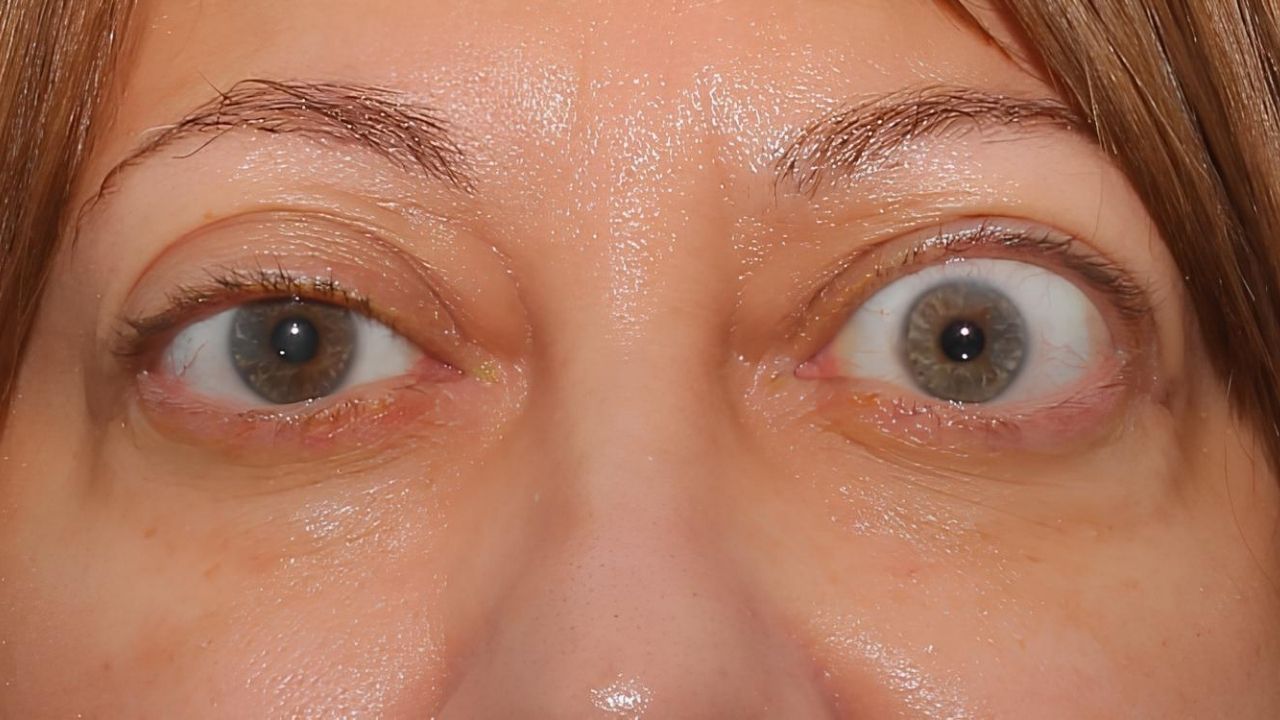
Joffroy's Sign is a fascinating neurological phenomenon that often leaves people curious. Ever wondered what it really means? Joffroy's Sign refers to the absence of forehead wrinkling when a person looks upward, typically indicating a problem with the facial nerve or muscles. This sign can be crucial for diagnosing conditions like Graves' disease or myasthenia gravis. Understanding this sign can help in early detection and treatment of these conditions. Whether you're a medical student, a curious mind, or someone seeking answers for health concerns, knowing about Joffroy's Sign can be incredibly useful. Let's dive into 25 intriguing facts about this unique medical sign.
Key Takeaways:
- Joffroy's Sign is a medical clue named after a French neurologist. It helps doctors diagnose conditions like Graves' disease and thyroid eye disease through a simple, non-invasive test.
- This historical sign, discovered in the 19th century, still plays a crucial role in modern medicine. It aids in the early detection of serious conditions, guiding further testing for accurate diagnosis.
What is Joffroy's Sign?
Joffroy's Sign is a clinical indicator used by doctors to diagnose certain neurological conditions. Named after the French neurologist Alexis Joffroy, this sign involves the absence of forehead wrinkling when a patient looks upward. It’s a small but significant clue in the medical world.
-
Named After Alexis Joffroy: Alexis Joffroy, a French neurologist, first described this sign in the late 19th century. His work has had a lasting impact on neurology.
-
Forehead Wrinkling: The sign is observed by asking a patient to look upward. Normally, this action causes the forehead to wrinkle. In patients with Joffroy's Sign, this wrinkling is absent.
-
Indicator of Graves' Disease: One of the primary conditions associated with Joffroy's Sign is Graves' disease, an autoimmune disorder affecting the thyroid.
-
Thyroid Eye Disease: Joffroy's Sign is often seen in patients with thyroid eye disease, a condition where the muscles and tissues around the eyes become inflamed.
-
Neurological Examination: During a neurological exam, doctors look for Joffroy's Sign to help diagnose underlying conditions. It’s a quick and non-invasive test.
How is Joffroy's Sign Detected?
Detecting Joffroy's Sign involves a simple procedure that can be performed in a clinical setting. Here’s how doctors do it:
-
Patient Positioning: The patient is asked to sit comfortably and look straight ahead.
-
Upward Gaze: The doctor then instructs the patient to look upward without moving their head.
-
Observation: The doctor observes the forehead for any wrinkling. Absence of wrinkles indicates a positive Joffroy's Sign.
-
Comparative Analysis: Sometimes, doctors compare the patient's forehead wrinkling with that of a healthy individual to confirm the sign.
-
Documentation: Findings are documented in the patient's medical records for further analysis and diagnosis.
Conditions Associated with Joffroy's Sign
Joffroy's Sign is not a standalone diagnosis but a clue pointing toward other conditions. Here are some of the conditions linked to this sign:
-
Graves' Disease: This autoimmune disorder is one of the most common conditions associated with Joffroy's Sign.
-
Hyperthyroidism: Overactive thyroid can lead to symptoms that include Joffroy's Sign.
-
Thyroid Eye Disease: Inflammation around the eyes due to thyroid issues often presents with Joffroy's Sign.
-
Myasthenia Gravis: This chronic autoimmune neuromuscular disease can also show Joffroy's Sign.
-
Other Neurological Disorders: Various other neurological conditions may present with this sign, making it a valuable diagnostic tool.
Importance in Medical Diagnosis
Joffroy's Sign plays a crucial role in the early detection and diagnosis of several conditions. Here’s why it’s important:
-
Early Detection: Identifying Joffroy's Sign can lead to early diagnosis of serious conditions like Graves' disease.
-
Non-Invasive: The test for Joffroy's Sign is simple and non-invasive, making it easy to perform in any clinical setting.
-
Cost-Effective: Since it requires no special equipment, detecting Joffroy's Sign is cost-effective.
-
Quick Assessment: The test takes only a few seconds, allowing for quick assessment during routine check-ups.
-
Guides Further Testing: A positive Joffroy's Sign can guide doctors to order more specific tests for a definitive diagnosis.
Historical Context of Joffroy's Sign
Understanding the historical context of Joffroy's Sign provides insight into its significance in medical history.
-
19th Century Discovery: Alexis Joffroy first described this sign in the late 1800s, contributing to the field of neurology.
-
Medical Milestone: The identification of Joffroy's Sign marked a milestone in diagnosing thyroid-related conditions.
-
Evolution of Neurology: Joffroy's work helped pave the way for modern neurological examinations and diagnostic techniques.
-
Legacy of Alexis Joffroy: Joffroy's contributions to medicine extend beyond this sign, influencing various aspects of neurology.
-
Continued Relevance: Despite being over a century old, Joffroy's Sign remains relevant in contemporary medical practice, highlighting its enduring value.
The Final Word on Joffroy's Sign
Joffroy's Sign, a fascinating neurological indicator, offers a glimpse into the complexities of the human body. This sign, often linked to conditions like Graves' disease, helps doctors diagnose and understand underlying health issues. Knowing about Joffroy's Sign can empower patients and caregivers, making medical consultations more productive.
Understanding this sign isn't just for medical professionals. Anyone curious about how the body signals distress can find it intriguing. From its discovery by Dr. Joffroy to its role in modern medicine, this sign remains a valuable tool.
So next time you hear about Joffroy's Sign, you'll know it's more than just a medical term. It's a window into the body's intricate communication system. Keep this knowledge handy; it might come in useful someday.
Frequently Asked Questions
Was this page helpful?
Our commitment to delivering trustworthy and engaging content is at the heart of what we do. Each fact on our site is contributed by real users like you, bringing a wealth of diverse insights and information. To ensure the highest standards of accuracy and reliability, our dedicated editors meticulously review each submission. This process guarantees that the facts we share are not only fascinating but also credible. Trust in our commitment to quality and authenticity as you explore and learn with us.
